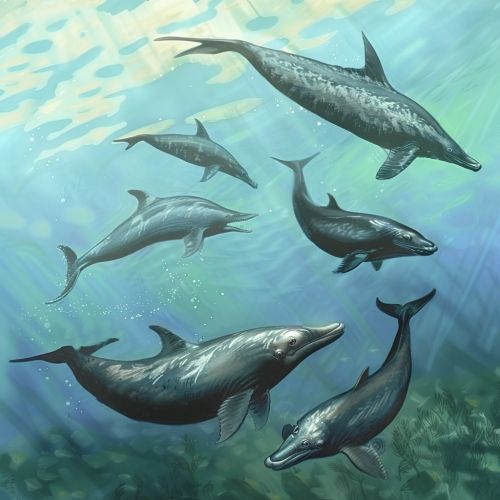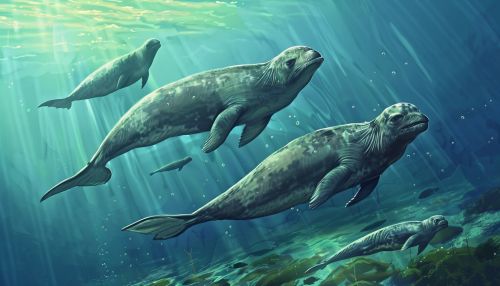Archaeocetes
Introduction
Archaeocetes are an extinct group of ancient cetaceans which include the ancestors of modern whales, dolphins, and porpoises. The term "Archaeocetes" is derived from the Greek words 'archaios' meaning ancient and 'cetus' meaning whale. They are considered to be the first cetaceans, evolving from land-dwelling mammals around 50 million years ago during the Eocene epoch.


Evolution
The evolution of Archaeocetes is a fascinating study in the transition from terrestrial to aquatic life. The earliest known Archaeocetes, such as Pakicetus, were semi-aquatic, resembling modern otters in their habits. Over time, these early cetaceans evolved to become fully aquatic, with changes in their skeletal structure, respiratory system, and sensory organs.
From Land to Sea
The transition from land to sea involved significant morphological and physiological changes. The limbs of early Archaeocetes were modified into flippers, and their tails developed flukes for propulsion. The nostrils migrated to the top of the head, forming a blowhole for breathing while submerged. The body became streamlined to reduce drag in water, and a layer of blubber was developed for insulation and buoyancy.
Skeletal Changes
The skeletal changes in Archaeocetes are particularly notable. The vertebrae in the lower back were fused, providing stability during swimming. The hind limbs became vestigial and eventually disappeared, while the forelimbs became paddle-like flippers. The skull became elongated and the jawbone became thin and flexible, allowing for a wider gape to capture prey.
Sensory Adaptations
Archaeocetes also developed unique sensory adaptations for their aquatic lifestyle. Their eyes adapted to see clearly underwater, and their ears became specialized for detecting sound in water. They also developed a unique organ known as the melon, which is used in echolocation.
Diversity and Classification
Archaeocetes are divided into five families: Pakicetidae, Ambulocetidae, Remingtonocetidae, Protocetidae, and Basilosauridae. Each family represents a different stage in the transition from land to sea, with Pakicetidae being the most terrestrial and Basilosauridae being the most aquatic.
Pakicetidae
The Pakicetidae are the earliest known Archaeocetes, dating back to the early Eocene. They were semi-aquatic, with long limbs and a body shape similar to modern otters. The best-known member of this family is Pakicetus, which is often considered the first whale.
Ambulocetidae
The Ambulocetidae, or "walking whales", were larger and more aquatic than the Pakicetidae. They had shorter limbs and a more streamlined body, but still retained the ability to walk on land. The most famous member of this family is Ambulocetus, also known as the "walking whale".
Remingtonocetidae
The Remingtonocetidae were similar in size to the Ambulocetidae, but had even more adaptations for aquatic life. They had long, slender bodies and large, paddle-like feet. Their nostrils were located further back on the skull, indicating that they were capable of breathing while partially submerged.
Protocetidae
The Protocetidae were fully aquatic, but still retained vestigial hind limbs. They had a more whale-like body shape, with a large tail and a small head. The best-known member of this family is Rodhocetus, which had a body shape similar to modern dolphins.
Basilosauridae
The Basilosauridae were the first fully aquatic cetaceans. They had no hind limbs and a fully developed tail fluke. Their bodies were long and serpent-like, with a small head and a large tail. The most famous member of this family is Basilosaurus, which was one of the largest animals of its time.
Extinction
The Archaeocetes went extinct around 34 million years ago, at the end of the Eocene. Their extinction is believed to have been caused by a combination of climate change and competition from other marine mammals. However, they left a lasting legacy in the form of their descendants, the modern cetaceans.
